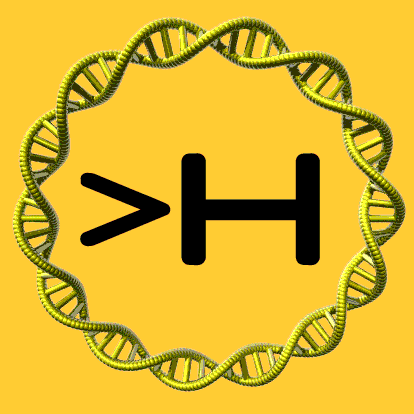BY LETTER
Gengineer, Geneer (profession)
Technology > Technology Type or Material > Gengineering
Technology > Application > Neogenics
Culture and Society > Economics > Occupations, Avocations, and Work
Technology > Application > Neogenics
Culture and Society > Economics > Occupations, Avocations, and Work
 Image from Anders Sandberg |
The development and application of scientific methods, procedures, and technologies that permit direct manipulation of genetic material in order to alter the hereditary traits of a cell, organism, or population
One of the most important and widely practised professions in the galaxy, gengineering is the practical development of genetics, and involves transplanting or replicating genes from other organisms or templates into the host chromosomes in order to repair defects, enhance inherited traits, or simply create completely new organisms. A few of the multiplicity of varied uses include low-tech and low-maintenance manufacturing of complex proteins, hormones, enzymes, etc via bacterial biotech, biobot and biomachine control and design, genehacking and genemod research, development and application, creating exotic or improved plant and animals, cloning, tweaking human and other genotypes to survive under exotic conditions, creating genetic superiors, provolving animals (and even plants) to baseline-human-level sentience or above, and splicing terragen- and xeno- biota to create completely novel organisms.
In the Current Era many gengineers can be found in the Terragen Federation, the Zoeific Biopolity and the Technorapture Hypernation. Some ancient houses like the Genen have acquired great wealth and prestige through gengineering occupations and investment.
Related Articles
- Algaehol Bloom Disaster, The
- Chromosome - Text by M. Alan Kazlev
In terragen biological life-forms, the individual self-replicating thread-like structures, containing the nucleotide sequence of DNA and along which the genes are located. In prokaryotes, chromosomal DNA is circular, and the entire genome is carried on one chromosome, which is distributed throughout the cell. In Eukaryotic cells the chromosomes are contained within the cellular nucleus, and the genome includes a number of chromosomes whose DNA is associated with different kinds of proteins. - Gene
- Gene Expression
- Genehacker
- Genematode
- Genemod Human Dating and Matching Services
- Genen, House Genen
- Genentics - Text by Anders Sandberg
Genetekkerese dialect, developed as part of the family historicism of the 2000's. Commonly spoken by Genen, official language on Frog's Head. Part of the Genetekkerese family of languages. Contains elements of Anglic, Arabic and Esperanto. - Genestick
- GeneTEK
- Genetekkers, The
- Genetic Algorithm - Text by Anders Sandberg in his Transhumanist Terminology
Any algorithm which seeks to solve a problem by considering numerous possibilities at once, ranking them according to some standard of fitness, and then combining ("breeding") the fittest in some way. In other words, any algorithm which imitates natural selection. - Genetic Independents
- Genetics - Text by M. Alan Kazlev
The study of heredity, genes, and the genome, both terragen and alien (this latter is sometimes called xenogenetics). Includes also the mapping of the genotype with the phenotype, simulation of past and future inheritance and evolutionary paths, and the basic theory behind gengineering. - Gengineer Republic
- Genome
- Genotype - Text by M. Alan Kazlev; additions by Stephen Inniss
Hereditary constitution of an individual; its genome (or equivalent, in artificial neumann-capable organisms or in xenobionts). Contrast with phenotype. - Genotypic Augmentation - Text by M. Alan Kazlev
Modification or augmentation that effects only the genotype of the gametes and descendants of an organism. Genotypic augmentation is biological or genetic modification or augmentation that effects only the genotype of the gametes and descendants of an organism. It does not alter the characteristics of the user, or of clones from the user's somatic cells, but it does modify that of all of the user's offspring. Contrast with phenotypic augmentation. - Imhotep
Appears in Topics
Development Notes
Text by M. Alan Kazlev
modified from the original write-up by Robert J. Hall
Initially published on 31 October 2001.
modified from the original write-up by Robert J. Hall
Initially published on 31 October 2001.






